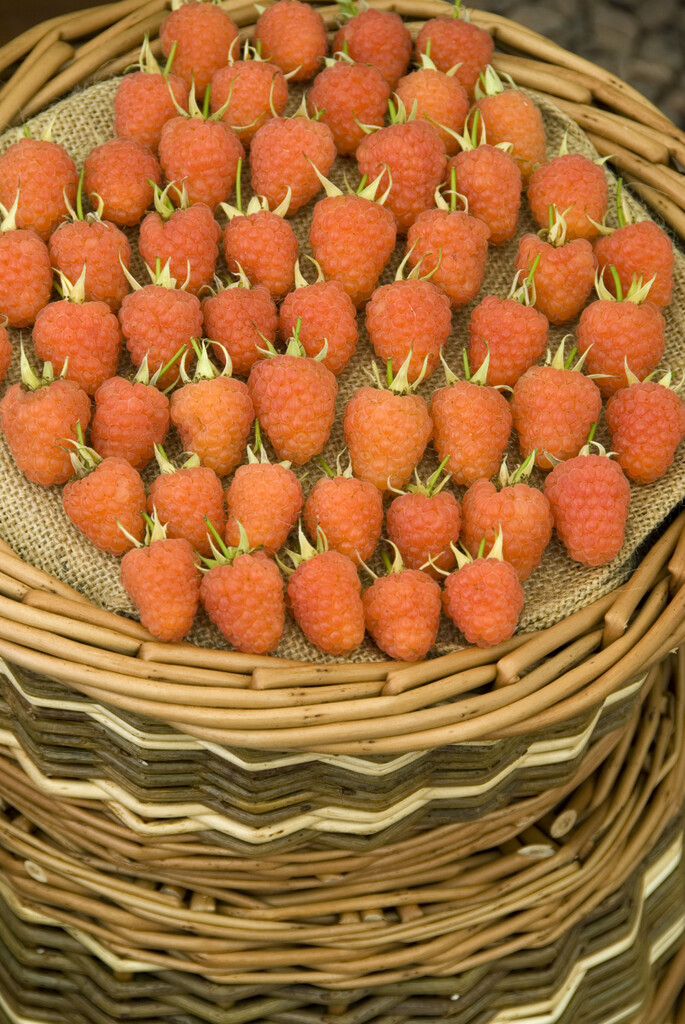Size
Ultimate height
1.5–2.5 metresTime to ultimate height
2–5 yearsUltimate spread
1–1.5 metresGrowing conditions
Moisture
Moist but well–drainedpH
Acid, NeutralColour & scent
| Stem | Flower | Foliage | Fruit | |
| Spring | White | Green | ||
|---|---|---|---|---|
| Summer | White | Green | Orange | |
| Autumn | Green | |||
| Winter |
Position
- Full sun
- Partial shade
Aspect
East–facing or South–facing or West–facing
Exposure
Sheltered Hardiness
H6Botanical details
- Family
- Rosaceae
- Native to GB / Ireland
- No
- Foliage
- Deciduous
- Habit
- Columnar upright, Suckering
- Genus
Rubus can be deciduous or evergreen shrubs, often scrambling with bristly or prickly stems bearing simple, lobed, palmate or pinnate leaves and 5-petalled flowers followed by juicy, sometimes edible fruits
- Name status
Unresolved
- Horticultural Group
- This genus produces fruit, but not necessarily edible fruit
How to grow
Cultivation
Grow in moisture-retentive, fertile, ideally slightly acidic soil, which is well-drained and weed free. For best results, plant in a sunny position. They will tolerate light shade, but may produce a smaller crop. Train raspberries in rows using wires for support. May have the potential to become a nuisance if not managed well. See raspberry cultivation
Propagation
Lift healthy suckers that appear between the rows and replant in a new spot. You can also divide large clumps when dormant
Suggested planting locations and garden types
- Wildlife gardens
- Edible fruit
Pruning
After harvesting in summer, cut back fruited canes to ground level
Pests
May be susceptible to raspberry beetle, raspberry leaf and bud mite. May need protection from birds
Diseases
May be susceptible to grey moulds, raspberry cane spot, a fungal leaf spot, raspberry cane blight or a virus
Get involved
The Royal Horticultural Society is the UK’s leading gardening charity. We aim to enrich everyone’s life through plants, and make the UK a greener and more beautiful place.
